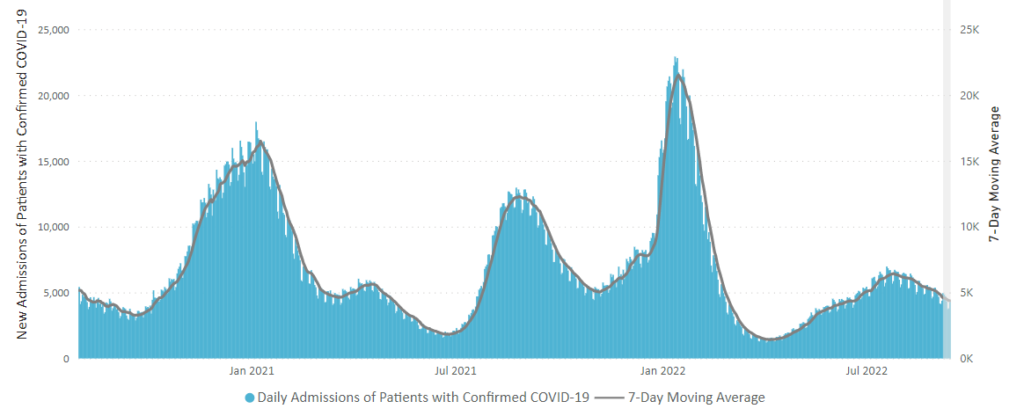From the FEHB front, the Federal Times discusses one of OPM’s 2023 FEHB initiatives, coverage of gender-affirming care.
OPM announced
The Office of Personnel Management (OPM) migrated from the legacy application responsible for the financial management activities of over $1.1+ trillion-dollar trust fund assets to a modernized financial system platform that is managed and maintained by the Department of the Treasury, Bureau of the Fiscal Service’s Administrative Resource Center (ARC).
The partnership between OPM and ARC will result in millions of taxpayer dollars saved, and enable a modernized, secure financial management solution and re-engineered processes to support the administration of the earned benefits program which includes retirement, health, and life insurance. As a result, millions of federal employees, retirees, and their families should have increased confidence in the programs that ensure they can meet their retirement and healthcare and life insurance needs.
Here’s the related ARC press release. ARC is a federal government center of excellence. The FEHBlog is interested in reading more details on the benefits of this new system.
From the public policy front, here are links to AHIP’s press releases from this week on the ACA individual non-discrimination rule, Section 1557, and its favorable reaction to CMS’s idea to create a national provider directory.
Healthcare Dive tells us
A regulatory deadline kicked in Thursday requiring providers and other healthcare entities to be able to share a significantly larger scope of data with patients, despite major provider groups arguing they’re not ready to comply.
As of Thursday, information blocking regulations apply to all electronic health information in a record that qualifies as protected health information under the Health Insurance Portability and Accountability Act.
Previously, providers only had to make available data elements in a specific dataset called United States Core Data for Interoperability.
Time will tell us about the rule’s effect.
From the Medicare front, Forbes offers a deep dive into 2023 adjustments to the Medicare Parts B and D beneficiary income premium adjustments known as IRMMA. IRMAA impacts many federal annuitants, which causes an ongoing material reduction in new federal annuitants signing in for Part B. The kick in the pants is that when an annuitant’s income declines below that IRMMA level which typically happens over time, the Part B premium is unaffordable due to the late enrollment penalty.
From the public health front —
The Centers for Disease Control is calling attention to its patient and provider education materials on sepsis.
The American Hospital Association informs us
More than 2.5 million students in grades 6-12 reported using electronic cigarettes in the past 30 days when surveyed this year, including 14% of high school students and 3% of middle school students, the Centers for Disease Control and Prevention reported today. One in four students who used e-cigarettes used them daily, 8 in 10 used flavored e-cigarettes and over half used disposable e-cigarettes. Since 2014, U.S. youth have used e-cigarettes more than any other tobacco product.
“It’s critical that we work together to prevent youth from starting to use any tobacco product — including e-cigarettes — and help all youth who do use them, to quit,” said Deirdre Lawrence Kittner, director of CDC’s Office on Smoking and Health.
For more information, see the CDC fact sheet for health care providers and tools to help teens quit.
From the Rx coverage front,
The New York Times informs us
A new medication for A.L.S., the devastating neurological disorder that causes paralysis and death, will have a list price of $158,000 a year, its manufacturer disclosed Friday.
The treatment, to be marketed as Relyvrio, is a combination of two existing drugs and will be available to patients in the United States in about four to six weeks, according to officials of the company, Amylyx Pharmaceuticals.
The Institute for Clinical and Economic Research has observed
Last week, the FDA approved Relyvrio, Amylyx Pharma’s therapy for amyotrophic lateral sclerosis. Even in the absence of definitive proof of efficacy, there are clear benefits to ensuring patients with a rapidly fatal disease have early access to a safe therapy. In a situation like this, we believe the manufacturer has an obligation to price responsibly. ICER concluded that an annual price of $9,100 to $30,700 would be reasonable if the therapy actually works. While awaiting proof, we believe that patients would benefit from a price closer to the price of production of Relyvrio.
Ruh roh.
Fierce Health reports
Beginning this month, the Pennsylvania-based plan and Mark Cuban’s drug company (MCCPDC) will begin to let members and community organizations know about their collaboration and how they can access low-cost drugs, according to a press release. In 2023, Capital Blue Cross members will be able to use their insurance cards at the company’s online pharmacy.
The online pharmacy launched earlier this year, aiming to disrupt skyrocketing prescription drug prices in the U.S. It currently offers nearly 1,000 generic prescription drugs that it says reflect manufacturer prices plus a 15% fee. * * *
While initially, MCCPDC was planning to launch its own pharmacy benefit manager, it then scrapped those plans, announcing its first PBM partnership last week. The PBM has no rebates and no spread pricing. Some experts have cautioned that while the company’s effort is effective, it isn’t tackling a more pressing problem—brand-name drug prices, given generic drugs are up to 85% less expensive. The company is hoping to offer brand-name drugs down the line, CNBC reports.











